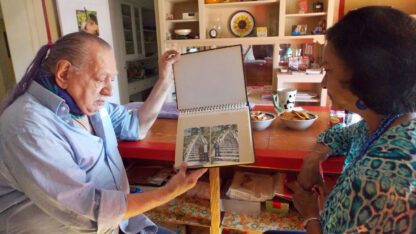On Wednesday at 10 a.m. Georgia lawmakers will officially start to redraw political lines based on new Census numbers. If redistricting were a game like baseball, Republicans would be swinging with a bat the size of a tennis racket.
That’s because, in Georgia, the party in power gets to decide political boundaries for congressional seats, state house and senate district. Still, like in any game, there are rules they’ll need to follow.
“Rule number one, you have to equalize populations, and you have to have close to the same number of people in each district,” according to UGA political scientist Charles Bullock, who wrote a book on redistricting.
“For congressional seats, the number of people per district can deviate only 1 or 2%. For state and local districts, the population can differ plus or minus 5%,” Bullock said.
“Rule number two, and this grows out of civil rights litigations, is that you cannot discriminate against minorities when you’re drawing districts. “
This rule is where the Voting Rights Act of 1965 comes in, especially Section 2 of that law prohibiting redistricting plans that discriminate based on race or membership in a language minority group. The 2020 census shows that Georgia’s minority population has grown. Its white non-Hispanic population has diminished to 52%.
“As Republicans go about drawing the maps, they have to be very aware of the effect of those maps on minority voters throughout the state,” said voting right lawyer Bryan Sells.
What’s not allowed under Section 2 is “packing” districts with minority voters, so that neighboring districts can be more white or distributing minority voters among several districts to diminish their voting strength overall, which is known as “cracking.”
Ten years ago, when Republicans first got a chance to redraw districts in Georgia, Sells says they got too aggressive in drawing district lines they thought they could hold or win over.
“There’s an old saying in redistricting that pigs get fat and hogs get slaughtered. And I think in the last go-round, the lines were drawn by hogs, they were trying to flip seats, and they were successful in the short term, but not in the long term,” Sells said.
Case in point: Georgia’s 6th and 7th districts in suburban Atlanta, which flipped to Democrats in recent elections. Sells predicts Republicans will not have much leverage this year.
“They might play more defense than offense in this round because they can’t stop the dramatic population changes that are still going on in this state,” Sell said.
There are several map proposals already floating about. One from Senate Republicans, public suggestions from Democrats and advocacy groups like Fair Districts Georgia also mapped out ideas. The maps that will matter the most are expected to come out this week and be debated, scrutinized and criticized because, as Bullock points out, “Redistricting is the most political activity in America.” Georgia’s special session is only the beginning of a long process.
“The first round is played in the legislature. The second round is played out in the courts,” Bullock said.
So, the legislative session is only the first step in a long process. If redistricting were a golf game, Democrats and Republicans would tee up their arguments in the coming weeks to score a victory in that court challenge.









